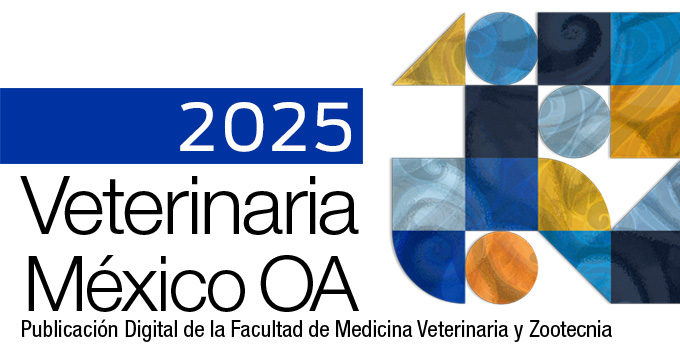Viral metagenomics reveals diverse viruses and antibiotic resistance genes in fecal samples of swine from farms in Shandong province
Main Article Content
Abstract
Almost all research on the swine gut microbiome has focused on bacteria. However, these studies paid little attention to the swine gut virome. Here, metagenomic sequencing was employed to characterize the gut viromes and reservoir of antibiotic resistance genes (ARGs) in 16 pig farms which are distributed in 16 different prefecture-level cities in Shandong province. We identified the community composition of the gut viromes, and the top 50 viruses, and showed the patterns of the virus in 16 pig farms at the phylum, genus, and species levels. A total of 191 ARGs potentially conferring resistance to 17 classes of antibiotics were detected in the 16 pig farms. These 16 samples exhibited a superior abundance and more widespread distribution of genes associated with tetracycline, aminoglycosides, and macrolide-lincosamide-streptogramin (MLS) than other ARGs. Our research provides a universal overview of the prevalence and expression of virus and ARGs in pig gut microbiota.
Article Details
References
Newsome RC, Yang Y, Jobin C. The microbiome, gastrointestinal cancer, and immunotherapy. Journal of Gastroenterology and Hepatolology. 2022;37(2):263-272. doi: 10.1111/jgh.15742.
Paik D, Yao L, Zhang Y, Bae S, D'Agostino GD, Zhang M, et al., Human gut bacteria produce ΤΗ17-modulating bile acid metabolites. Nature. 2022;603(7903):907-912. doi: 10.1038/s41586-022-04480-z.
Kee EC, Dantas G. Close encounters of three kinds: bacteriophages, commensal bacteria, and host immunity. Trends in Microbiology. 2018;26(11):943-954. doi: 10.1016/j.tim.2018.05.009.
Yuan L, Hensley C, Mahsoub HM, Ramesh AK, Zhou P. Microbiota in viral infection and disease in humans and farm animals. Progress in Molecular Biology and Translational Science. 2020;171:15-60. doi: 10.1016/bs.pmbts.2020.04.005.
Zhang S, Zhang S, Hou Y, Huang Y, Cai J, Wang G, et al. Porcine deltacoronavirus infection disrupts the intestinal mucosal barrier and inhibits intestinal stem cell differentiation to Goblet cells via the Notch signaling pathway. Journal of Virology. 2023;97(6):e00689-23. doi: 10.1128/jvi.00689-23.
Stäubli T, Rickli CI, Lechmann J, Torgerson PR, Fraefel C, et al. Porcine teschovirus, sapelovirus, and enterovirus in Swiss pigs: multiplex RT-PCR investigation of viral frequencies and disease association. Journal of Veterinary Diagnostic Investigation. 2021;33(5):864-874. doi: 10.1177/10406387211025827.
Qian X, Gunturu S, Guo J, Chai B, Cole JR, Gu J, et al. Metagenomic analysis reveals the shared and distinct features of the soil resistome across tundra, temperate prairie, and tropical ecosystems. Microbiome. 2021;9(1):108. doi: 10.1186/s40168-021-01047-4.
Munk P, Knudsen BE, Lukjancenko O, Ribeiro AS, Van Gompel L, Luiken REC, et al. Abundance and diversity of the faecal resistome in slaughter pigs and broilers in nine European countries. Nature Microbiology. 2018;3(8):898-908. doi: 10.1038/s41564-018-0192-9.
Jiang X, Hashim MM, Charusanti P, Munck C, Blin K, Tong Y, et al., Dissemination of antibiotic resistance genes from antibiotic producers to pathogens. Nature Communications. 2017;8:15784. doi: 10.1038/ncomms15784.
Hu Y, Gao GF, Zhu B. The antibiotic resistome: gene flow in environments, animals and human beings. Frontiers of Medicine. 2017;11(2):161-168. doi: 10.1007/s11684-017-0531-x.
Wang Y, Hu Y, Cao J, Bi Y, Lv N, Liu F, et al. Antibiotic resistance gene reservoir in live poultry markets. Journal of Infection. 2019;78(6):445-453. doi: 10.1016/j.jinf.2019.03.012.
Liu J, Taft DH, Maldonado-Gomez MX, Johnson D, Treiber ML, Lemay DG, et al. The fecal resistome of dairy cattle is associated with diet during nursing. Nature Communications. 2019;10(1):4406. doi: 10.1038/s41467-019-12111-x.
Aggarwala V, Liang G, Bushman FD. Viral communities of the human gut: metagenomic analysis of composition and dynamics. Mobile DNA. 2017;8:12. doi: 10.1186/s13100-017-0095-y.
Bodewes R, Ruiz-Gonzalez A, Schapendonk CME, van den Brand JMA, Osterhaus Albert DME, Smits SL. Viral metagenomic analysis of feces of wild small carnivores. Virology Journal. 2014;11:89. doi: 10.1186/1743-422x-11-89.
Roux S, Enault F, Hurwitz BL, Sullivan MB. VirSorter: mining viral signal from microbial genomic data. PeerJ. 2015;3: e985. doi: 10.7717/peerj.985.
Ren J, Ahlgren NA, Lu YY, Fuhrman JA, Sun F. VirFinder: a novel k-mer based tool for identifying viral sequences from assembled metagenomic data. Microbiome. 2017;5(1):69. doi: 10.1186/s40168-017-0283-5.
Chen S, Zhou Y, Chen Y, Gu J. fastp: an ultra-fast all-in-one FASTQ preprocessor. Bioinformatics. 2018;34(17):i884-i890. doi: 10.1093/bioinformatics/bty560.
Li H, Durbin R. Fast and accurate short read alignment with Burrows-Wheeler transform. Bioinformatics. 2009;25(14):1754-1760. doi: 10.1093/bioinformatics/btp324.
Hyatt D, Chen GL, LoCascio PF, Land ML, Larimer FW, Hauser LJ. Prodigal: prokaryotic gene recognition and translation initiation site identification. BMC Bioinformatics. 2010;11:119. doi: 10.1186/1471-2105-11-119.
Kochetov AV, Sarai A, Rogozin IB, Shumny VK, Kolchanov NA. The role of alternative translation start sites in the generation of human protein diversity. Molecular Genetics and Genomics. 2005; 273(6): 491-496. doi: 10.1007/s00438-005-1152-7.
Fu L, Niu B, Zhu Z, Wu S, Li W. CD-HIT: accelerated for clustering the next-generation sequencing data. Bioinformatics. 2012;28(23):3150-31522. doi: 10.1093/bioinformatics/bts565.
Kim D, Pertea G, Trapnell C, Pimentel H, Kelley R, Salzberg SL. TopHat2: accurate alignment of transcriptomes in the presence of insertions, deletions and gene fusions. Genome Biology. 2013;14(4):R36. doi: 10.1186/gb-2013-14-4-r36.
Buchfink B, Xie C, Huson DH. Fast and sensitive protein alignment using DIAMOND. Nature Methods. 2015;12(1):59-60. doi: 10.1038/nmeth.3176.
Kanehisa M, Sato Y, Kawashima M, Furumichi M, Tanabe M KEGG as a reference resource for gene and protein annotation. Nucleic Acids Research 2016; 44(D1): D457-D462. doi: .
Kanehisa M, Furumichi M, Tanabe M, Sato Y, Morishima K. KEGG: new perspectives on genomes, pathways, diseases and drugs. Nucleic Acids Research. 2017; 45(D1): D353-D361. doi: 10.1093/nar/gkw1092.
Bowdish ME, D'Agostino RS, Thourani VH, Schwann TA, Krohn C, Desai N, et al. STS adult cardiac surgery database: 2021 update on outcomes, quality, and research. Annals of Thoracic Surgery. 2021;111(6):1770-1780. doi: 10.1016/j.athoracsur.2021.03.043.
Nantel-Fortier N, Gauthier M, L'Homme Y, Lachapelle V, Fravalo P, Brassard J. The swine enteric virome in a commercial production system and its association with neonatal diarrhea. Veterinary Microbiology. 2022;266:109366. doi: 10.1016/j.vetmic.2022.109366.
Tao S, Zou H, Li J, Wei H. Landscapes of enteric virome signatures in early-weaned piglets. Microbiology Spectrum. 2022;10(4):e0169822. doi: 10.1128/spectrum.01698-22.
Cao Z, Sugimura N, Burgermeister E, Ebert MP, Zuo T, Lan P. The gut virome: A new microbiome component in health and disease. eBioMedicine. 2022;81:104113. doi: 10.1016/j.ebiom.2022.104113.
Chen Q, Zhang X, Shi W, Du X, Ma L. Wang W, et al. Longitudinal investigation of enteric virome signatures from parental-generation to offspring pigs. Microbiology Spectrum. 2023; 11(3): e00023-23. doi: 10.1128/spectrum.00023-23.
Doan T, Hinterwirth A, Worden L, Arzika AM, Maliki R, Abdou A, et al. Gut microbiome alteration in MORDOR I: a community-randomized trial of mass azithromycin distribution. Nature Medicine, 2019;25(9):1370-1376. doi: 10.1038/s41591-019-0533-0.
Wang Y, Hu Y, Liu F, Cao J, Lv N, Zhu B, et al. Integrated metagenomic and metatranscriptomic profiling reveals differentially expressed resistomes in human, chicken, and pig gut microbiomes. Environment International. 2020;138:105649. doi: 10.1016/j.envint.2020.105649.
Salyers AA, Gupta A, Wang Y. Human intestinal bacteria as reservoirs for antibiotic resistance genes. Trends in Microbiology 2004; 12(9): 412-416. doi: 10.1016/j.tim.2004.07.004.
License

Veterinaria México OA by Facultad de Medicina Veterinaria y Zootecnia - Universidad Nacional Autónoma de México is licensed under a Creative Commons Attribution 4.0 International Licence.
Based on a work at http://www.revistas.unam.mx
- All articles in Veterinaria México OA re published under the Creative Commons Attribution 4.0 Unported (CC-BY 4.0). With this license, authors retain copyright but allow any user to share, copy, distribute, transmit, adapt and make commercial use of the work, without needing to provide additional permission as long as appropriate attribution is made to the original author or source.
- By using this license, all Veterinaria México OAarticles meet or exceed all funder and institutional requirements for being considered Open Access.
- Authors cannot use copyrighted material within their article unless that material has also been made available under a similarly liberal license.



